iPhone 6 vs Galaxy S6 vs LG G4 vs Nexus 6 camera UI comparison: which phone has the best camera app?
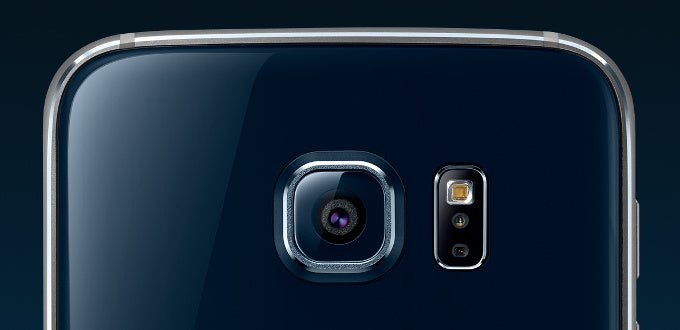
Cameras on smartphones have made another big jump this year: the Samsung Galaxy S6 and LG G4, two of this year's most popular devices, bring better looking images than their predecessors, and go in direct competition against the Apple iPhone 6 that many are still considering the gold standard for camera quality.
For this camera UI comparison, we have the Samsung Galaxy S6 with its hugely popular TouchWiz skin, the LG G4 with its LG UI that brings a new version of the camera app, the Apple iPhone 6 with its simple and straightforward interface, and finally, the Google Nexus 6 as a representative of the stock Android UI camera camp.
Quick access: shortcuts do matter
The first feature we look at is whether you have quick access shortcuts to the camera and how convenient are they.
The Galaxy S6 and LG G4 allow you to double click on a button to quickly access the camera
All four phones have a shortcut to the camera app that you can access from the lockscreen via a simple swipe. The Nexus 6 with its swipe from right to left and the iPhone 6 with its swipe from the bottom corner seem a bit more convenient and easier to use than the rest, but the difference is minimal.Many times, however, you want to quickly start the camera without even looking at the phone, and currently only the Samsung Galaxy S6 and LG G4 can do this with shortcuts embedded in physical keys. A simple double click of the home button on the S6 brings up the camera from any place within the UI, while the G4 requires you to click twice on the volume down button (and can snap a picture at that). This neat feature makes the Galaxy S6 and LG G4 truly stand out, and it is those two phones that you will find yourself capturing images quicker and getting those precious impromptu moments.
Ease of use: be able to quickly start shooting videos as well as capture images
Once you are in the camera app, experience shows that it is crucial to have a separate image and video capture button. After all, sometimes you need to capture a video of an event, and if you have to fiddle in the settings to switch to video recording, this may take precious moments and you ultimately miss that moment.
Again, only LG and Samsung seem to grasp the practical importance of such a feature as both phones have clearly visible, separate and easy to press image and video capture buttons. On the iPhone, you’d need to swipe to access video recording, while on the Nexus 6 the process is even more complex - you have to swipe to bring up a menu, then select video (sometimes wait for the mode to switch), and only then record video.
Auto mode
It's clear that most people use their smartphones to capture quick moments on the go with simplicity of use being the key, so that’s why an automatic camera mode, how well it captures images and what features it has is key to a good experience.
The iPhone 6 comes first to mind when we speak about simplicity - its automatic mode is the default one (there’s no pro mode available), and it works quickly and reliably. Apple features 5 shortcuts in this mode: flash control, HDR, timer, a button to switch to the front cam, and filters. Quite importantly, Apple also allows for easy control of exposure via a dial on the screen, so that you can fine tune the appearance of images without complications. We consider all of these essential and we don’t find a pressing need to have additional options.
The LG G4 offers two automatic modes: simple and auto. In simple, you don’t even have a camera key - you just tap anywhere on the screen to take a picture, and with no control over flash, HDR, and no separate video recording button, we find it more limiting than we’re ready to accept in daily use. The auto mode, on the other hand, offers such options, but does not give a direct button to control HDR, which we find inconvenient. For all else, though, it’s our preferred shooting mode for daily use.
Finally, the Nexus 6 offers just one camera mode for regular pictures and it’s the least convenient one of all of them. Basic settings are available, but rather than being one touch away, you have to tap on the dots button to get to them. You have neat control over HDR, but exposure control is clunky and there’s none of the quick exposure adjustments that are neatly available on the iPhone.
Additional options: useful ones and gimmicks
We've seen phone makers bring a lot of interesting new camera shooting modes on flagships: some turn out to be very useful, while others turn out to be interesting at first, but not so much in the long-term and we’re left with a feeling of them being a gimmick. Which are which?
Then, there are the live camera filters and effects, which are basically Instagram-like effects applied to the image before (and not after) you shoot it. Having filters is a nice way to see how your images will look, say, in monochrome before you shoot them, and while they will not be in use very often, we don’t consider such a feature a straight gimmick (even though, you can achieve the same effect with much higher precision in post-processing). The iPhone 6 and Galaxy S6 both support such effects/filters, while the LG G4 and Nexus 6 do not have live effects and you cannot preview any artistic effects on an image prior to shooting.
Panoramic shots are supported on all four phones. We won't discuss the quality of the panoramic images, but it's important that those features are present on all devices. Since panoramic images are not something that many people shoot all that often, we find it forgivable, if the option is not immediately visible, in a one-tap manner. Only the Nexus 6 supports the additional 360-degree panorama option, which is a great extra to have and one that allows you to capture the magic of a certain place in all of its flavor. All four phones can capture panoramas with the phone held in portrait view, which is what most people would use. The Android devices also capture panoramic images with the phone held in landscape orientation, while the iPhone is not capable of doing that (but it is not a particularly meaningful feature to begin with).
There are other effects offered on these phones, but those will not be used all that often: the selective focus or virtual shot on the Galaxy S6 are fun to play with, but not many people will use them on a daily basis. While not exactly a gimmick, such effects (and dual camera shooting is one of them also) are available on the LG G4 and Samsung Galaxy S6, but the added value that they bring is fairly limited for practical purposes.
All four phones support silent shutter which is a nice feature to have when you want to take a picture discretely. The way this works is fairly straightforward: you have to silence your ringtone (turn the mute switch on the iPhone) and the shutter click goes away, so that you can snap away without any sound effects.
While you don’t absolutely need a manual shooting mode for a phone as much as you do for a DSLR (the use of manual controls for a DSLR is often times associated with complex lighting, while phones simply cannot sync flash heads and other required professional equipment), sometimes you might want to tweak the appearance of an image using manual controls.
It’s a neat extra option, but unfortunately the Apple iPhone 6 and Nexus 6 do not. At least not the stock camera apps that we are discussing - luckily there are very good manual camera apps on iOS and not so good ones (but still decent) for the Nexus.
The Samsung Galaxy S6 does feature a manual mode, but unfortunately it lacks the pretty essential control over shutter speeds and is just not all that convenient to use with toggles being a bit fiddly.
The LG G4, on the other hand, features the most impressive manual mode we’ve seen on a smartphone yet. It has granular control over the two key variables for a good image: ISO and shutter speed. In addition to that, you can manually select focus as well as white balance. It’s not just about having these options: in the new LG UI, it’s easy to control them as well as there is a dialer that you can conveniently swipe up and down without having to exactly tap on small icons on the screen and that’s very convenient. It’s worth also pointing out that ISO control is very granular, giving you very fine control over the gain of the sensor. Additionally, a histogram is available on the G4 to show how well exposed your images are, and that’s quite the unique feature in a stock camera app. Good job, LG!
Video features are worth a special look, as more and more people use their phones to shoot more than just the achievements and mishaps of their toddlers, and many are now using phones to shoot short films and do some vlogging. While for such purposes, third party apps often provide more options and flexibility, the stock apps is still worth checking out with all that it allows and all its limitations.
The Apple iPhone 6 stands out with the simplicity of its interface, yet it is one that achieves solid result with ease. Being able to control the exposure of videos live as you shoot with smooth transition between various exposure allows for great freedom of expression. Coupled with the instantaneous auto focusing system and the convenient tap to focus way of switching the focus, the stock iPhone camera app is a great tool for wannabe videographers. On the downside, we ought to mention that Apple has made it quite the trip to change from the default 30fps to the now preferred 60fps frame rate - you have to go into settings to change this simple option.
The Samsung Galaxy S6 can brag about having 4K video recording that the iPhone lacks and the same quick tap to focus functionality, but it lacks that nice exposure control for video. On a positive note, all its various shooting modes and settings are easily accessible within the app. The LG G4 supports tap to focus for video recording which is nice and it features a very fast and reliable auto-focusing, but it also lacks the option to quickly change exposure during recording.
Finally, apart from the torch (the flash is turned on to illuminate a scene) that all phones have, the Nexus 6 is practically devoid of any options for video recording. It does not even support tapping on the screen to re-focus, which is a disappointment. Google’s app definitely feels very barebones in this regard.
Panoramic shots are supported on all four phones. We won't discuss the quality of the panoramic images, but it's important that those features are present on all devices. Since panoramic images are not something that many people shoot all that often, we find it forgivable, if the option is not immediately visible, in a one-tap manner. Only the Nexus 6 supports the additional 360-degree panorama option, which is a great extra to have and one that allows you to capture the magic of a certain place in all of its flavor. All four phones can capture panoramas with the phone held in portrait view, which is what most people would use. The Android devices also capture panoramic images with the phone held in landscape orientation, while the iPhone is not capable of doing that (but it is not a particularly meaningful feature to begin with).
There are other effects offered on these phones, but those will not be used all that often: the selective focus or virtual shot on the Galaxy S6 are fun to play with, but not many people will use them on a daily basis. While not exactly a gimmick, such effects (and dual camera shooting is one of them also) are available on the LG G4 and Samsung Galaxy S6, but the added value that they bring is fairly limited for practical purposes.
All four phones support silent shutter which is a nice feature to have when you want to take a picture discretely. The way this works is fairly straightforward: you have to silence your ringtone (turn the mute switch on the iPhone) and the shutter click goes away, so that you can snap away without any sound effects.
For the pros: manual camera controls
While you don’t absolutely need a manual shooting mode for a phone as much as you do for a DSLR (the use of manual controls for a DSLR is often times associated with complex lighting, while phones simply cannot sync flash heads and other required professional equipment), sometimes you might want to tweak the appearance of an image using manual controls.
It’s a neat extra option, but unfortunately the Apple iPhone 6 and Nexus 6 do not. At least not the stock camera apps that we are discussing - luckily there are very good manual camera apps on iOS and not so good ones (but still decent) for the Nexus.
The Samsung Galaxy S6 does feature a manual mode, but unfortunately it lacks the pretty essential control over shutter speeds and is just not all that convenient to use with toggles being a bit fiddly.
The LG G4, on the other hand, features the most impressive manual mode we’ve seen on a smartphone yet. It has granular control over the two key variables for a good image: ISO and shutter speed. In addition to that, you can manually select focus as well as white balance. It’s not just about having these options: in the new LG UI, it’s easy to control them as well as there is a dialer that you can conveniently swipe up and down without having to exactly tap on small icons on the screen and that’s very convenient. It’s worth also pointing out that ISO control is very granular, giving you very fine control over the gain of the sensor. Additionally, a histogram is available on the G4 to show how well exposed your images are, and that’s quite the unique feature in a stock camera app. Good job, LG!
Video features
Video features are worth a special look, as more and more people use their phones to shoot more than just the achievements and mishaps of their toddlers, and many are now using phones to shoot short films and do some vlogging. While for such purposes, third party apps often provide more options and flexibility, the stock apps is still worth checking out with all that it allows and all its limitations.
The Apple iPhone 6 stands out with the simplicity of its interface, yet it is one that achieves solid result with ease. Being able to control the exposure of videos live as you shoot with smooth transition between various exposure allows for great freedom of expression. Coupled with the instantaneous auto focusing system and the convenient tap to focus way of switching the focus, the stock iPhone camera app is a great tool for wannabe videographers. On the downside, we ought to mention that Apple has made it quite the trip to change from the default 30fps to the now preferred 60fps frame rate - you have to go into settings to change this simple option.
The Samsung Galaxy S6 can brag about having 4K video recording that the iPhone lacks and the same quick tap to focus functionality, but it lacks that nice exposure control for video. On a positive note, all its various shooting modes and settings are easily accessible within the app. The LG G4 supports tap to focus for video recording which is nice and it features a very fast and reliable auto-focusing, but it also lacks the option to quickly change exposure during recording.







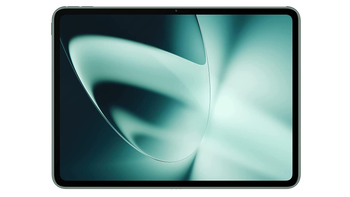
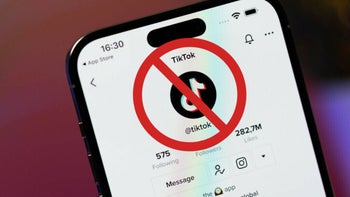

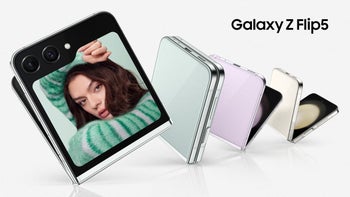

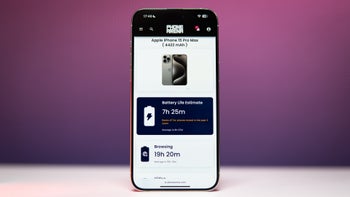
Things that are NOT allowed: